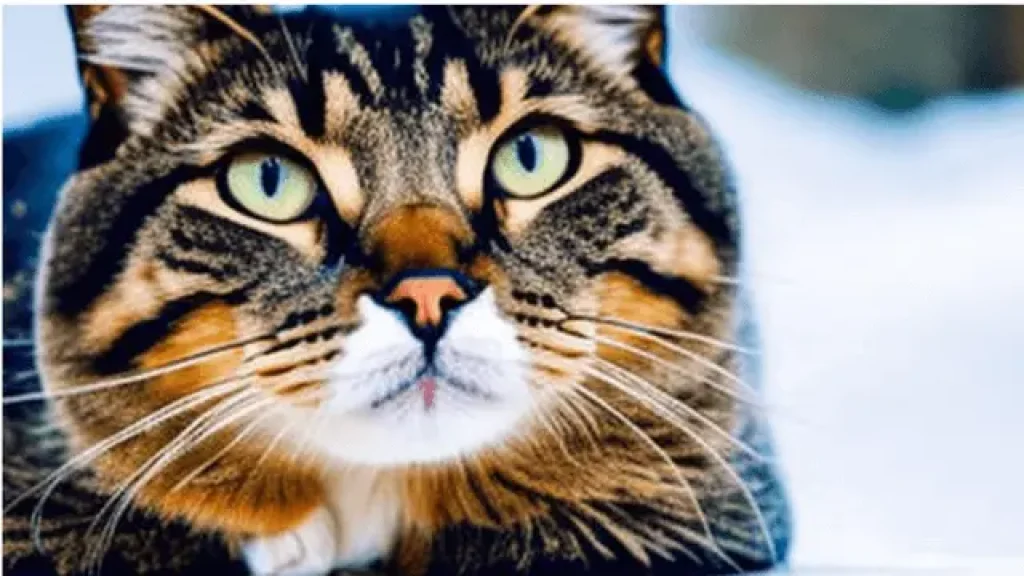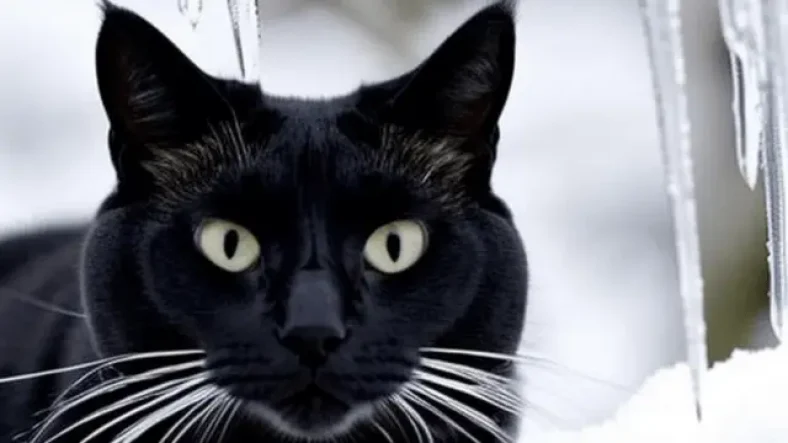Have you ever wondered what temperature a cat can freeze to death? It sounds like an unlikely scenario, but it’s important to understand the potential risks associated with cold weather.
As pet parents, we want our cats to be safe and healthy at all times – that includes knowing when temperatures drop too low for their comfort.
I’ll explain exactly what temperature your cat must endure before freezing to death and provide tips on how to protect them from extreme temperatures.
Cats are resilient creatures and have adapted over time to survive in various climates. But even though they may have thick fur coats and extra fat stores during colder months, cats still face dangers if exposed to extremely cold conditions for too long.
So just how cold does it need to be for a cat to freeze?
It turns out that the answer is not as straightforward as one might expect. The truth is there are several environmental factors that come into play when determining whether or not a cat will succumb to hypothermia or frostbite due to extreme temperatures.
Read on for more information about this important topic!
Contents
Understanding A Cat’s Cold Tolerance
A cat’s cold tolerance is nothing to sneeze at. They have been able to adapt and survive in some of the coldest climates, which makes it important for us to understand their physiology when it comes to temperature regulation.
A cat’s average body temperature is typically between 100°F and 102°F; significantly higher than humans, who range from 97.7°F-99.5°F.
This difference in body temperatures helps cats better maintain their core temperature, allowing them to be more resilient to extreme environmental conditions while still being able to conserve energy during colder weather.
This ability becomes even more apparent when looking into a cat’s fur coat and its role in thermoregulation. Cats can vary the structure of their individual hairs depending on how hot or cold they are feeling by using tiny muscles located near the base of each follicle.
This allows them to adjust both thickness and length as needed so that they remain comfortable regardless of their environment without having to expend much effort doing so.
Furthermore, cats possess an extra layer of fat under their skin which acts as insulation trapping heat near the surface, further protecting against hypothermia thanks to this evolutionary adaptation found within feline species worldwide.
Cats also possess a unique adaptation that aids in keeping warm: huddling up with other members of their colony, especially during winter months, passing around warmth through physical contact – something we could certainly learn from!
All these physiological adaptations help explain why cats don’t freeze easily despite harsh outdoor conditions, but what exactly is the point where death occurs?
Physiological Adaptations For Survival

Cats are equipped with some incredible physiological adaptations that allow them to survive in freezing temperatures. Their thick fur coat helps insulate their bodies from the cold air and keep body heat trapped close to the skin.
They have a faster metabolism than humans which helps generate more body heat as well as keeps them warm by speeding up their heart rate and respiration rate.
It’s also important for cats to maintain good respiratory health when exposed to cold temperatures since their respiratory system plays an important role in maintaining body temperature.
In order for cats to successfully stay alive in colder climates, they must take certain precautions, such as finding shelter or keeping active during periods of cold weather.
In addition, cats should be provided adequate nutrition so that they can maintain the energy levels needed to regulate their own body temperature.
Finally, they may need additional protection, such as sweaters or coats, if spending extended amounts of time outdoors during times of extreme cold.
These physiological adaptations help cats withstand lower temperatures; however, there is still a limit beyond which even these measures won’t be enough.
Generally speaking, experts agree that a cat will freeze to death at around 32°F (0°C). Beyond this point, it becomes extremely difficult for cats’ natural defenses against the cold to remain effective unless drastic steps are taken quickly.
Environmental Factors In Freezing Temperatures
As we discussed in the previous section, cats have a number of physiological adaptations to help them survive cold weather. But ultimately, their survival depends on environmental factors like temperature and insulation.
The amount of extreme cold that can affect an outdoor cat is determined by the climate it lives in and its access to shelter or safe places with protection from harsh winds and snow.
When temperatures drop below freezing, cats are at risk for hypothermia and frostbite if they don’t find ways to keep warm. If a cat finds itself stuck outside in extremely cold conditions, then it needs to be able to seek out sources of heat such as burrows, sheltered alcoves, or dens made up of snow banks; otherwise, there’s a chance it could freeze to death.
How much insulation this provides against the cold will depend on how thick the blanket of snow is around these shelters. Cats also might curl up together with other animals, such as rabbits, when trying to stay warm during very cold periods.
If your outdoor cat gets too chilly during winter months, you should consider bringing it inside or providing some kind of additional blankets or bedding so that it has extra warmth and comfort while outdoors.
You may even want to look into buying pet-safe heated beds, which will ensure your kitty stays cozy throughout colder times of the year!
With adequate preparation and care, you can make sure your furry friend remains healthy and happy despite changes in external temperatures.
Hypothermia And Frostbite In Cats

Cats are susceptible to hypothermia and frostbite when exposed to cold weather. Hypothermia occurs when a cat’s body temperature drops below normal, which is typically around 100°F.
Cats can get hypothermia in temperatures as mild as 50°F or lower if they don’t have access to shelter from the elements like wind and rain.
Signs of hypothermia include shivering, weakness, lethargy, low energy levels, lack of responsiveness, slow breathing, and even coma.
If not treated quickly enough, cats may die due to organ failure caused by prolonged exposure to cold temperatures.
Frostbite occurs when body tissues freeze due to extreme cold conditions. The most common areas affected by frostbite on cats are ears, tails, paws, and toes. Signs of frostbite include pale-gray skin that feels hard or waxy at first touch, followed by redness later on.
Other signs include swelling in affected areas accompanied by pain upon contact with warm objects such as human hands or furniture. Severe cases may require amputation of the affected area if left untreated for too long.
With colder winter months approaching fast, it’s important to take steps to ensure our cats stay healthy and safe during these times.
In order to avoid freezing conditions for cats, we need to provide them with proper shelters outside where they can find warmth and safety away from harsh winds and rain while also having enough food options available throughout the day inside the house, so they remain nourished in spite of bad weather conditions outside.
Preventing Freezing Conditions For Cats
Now that we know the dangers of hypothermia and frostbite for cats, it’s important to understand how to protect them from freezing temperatures.
The best way to prevent a cat from experiencing extreme cold is by keeping her indoors when temperatures are below 32 degrees Fahrenheit (0 Celsius).
If your cat must stay outdoors in colder weather, make sure she has access to a warm shelter with plenty of bedding material or blankets. This can help keep her body temperature up.
For outdoor cats, winter safety also includes providing enough food and water, as their caloric needs increase during the winter months due to the lower temperatures.
It’s also essential to monitor any changes in behavior, so you can respond quickly if they become affected by the cold.
Extra care should be taken with elderly cats or those with health conditions such as diabetes or arthritis, which can worsen when exposed to low temperatures.
By taking these steps, you can ensure your cat stays safe and comfortable throughout the winter season. But if, despite all your efforts, you find yourself caring for a frozen cat, don’t panic!
There are ways to provide first aid and bring their core body temperature back up – but more on that in our next section about the care of a frozen cat.
Care Of A Frozen Cat
When a cat is exposed to cold temperatures, it can freeze to death. The temperature at which this occurs varies depending on the breed and age of the animal. In general, though, cats are susceptible to hypothermia when the temperature falls below 40°F (4°C) and frostbite when temperatures drop below 32°F (0°C).
If you find your cat in a frozen state, there are several things you should do:
First Aid for Hypothermia Symptoms:
- Warm up your pet slowly using warm towels or blankets. Do not use direct heat sources like hair dryers or hot water bottles, as these can burn their skin.
- Monitor their body temperature with a thermometer until it reaches normal levels. If it does not reach normal levels after an hour, seek veterinary help immediately.
Frostbite Treatment:
- Remove any ice from their fur and gently massage the area with warm water. Then wrap them in a warm blanket while keeping their feet elevated off the ground.
- Seek professional medical attention if needed; some cases require antibiotics due to infection caused by frostbite injury.
It’s important that you take quick action when dealing with a frozen cat since they can suffer severe health issues, such as organ damage, if left untreated too long.
Be sure to always check outside for extreme weather conditions before letting your beloved pet out into the elements!
Frequently Asked Questions
Q: Can indoor cats get hypothermia or frostbite?
A: It is rare for indoor cats to suffer from hypothermia or frostbite as they are typically kept in a warm and controlled environment. However, it is still important to keep your home at a comfortable temperature for your cat, especially during colder months.
Q: What are some signs that my cat may be suffering from hypothermia?
A: Signs of hypothermia in cats can include shivering, lethargy, lack of responsiveness, slow breathing, and even coma. If you suspect your cat is suffering from hypothermia, seek veterinary help immediately.
Q: Can cats share body heat with other animals to stay warm?
A: Yes, cats can huddle up with other animals to share body heat and stay warm. This is a natural behavior that helps them survive in colder climates.
Q: Can I use hot water bottles or heating pads to warm up my cat if they are suffering from hypothermia?
A: No, it is not recommended to use hot water bottles or heating pads to warm up a cat suffering from hypothermia, as this can cause burns to their skin. Instead, use warm towels or blankets to slowly warm up your pet and seek veterinary help as soon as possible.
Q: How can I prevent my outdoor cat from freezing in the winter?
A: The best way to prevent your outdoor cat from freezing in the winter is to provide them with a warm shelter with plenty of bedding material or blankets. Additionally, make sure they have access to food and water and monitor any changes in their behavior to ensure they are not suffering from hypothermia or frostbite.
Conclusion
When the temperatures drop, our feline friends are at risk of freezing to death. It’s important to keep an eye out for signs that your cat is in danger and take action immediately if you suspect they may be suffering from hypothermia or frostbite.
The best way to protect your pet from such a fate is by making sure their environment stays warm enough for them.
This means keeping outdoor cats inside during cold snaps, setting up heated beds and blankets in colder rooms, and providing plenty of food with high-calorie content to help them maintain body heat.
Ultimately, prevention is key when it comes to protecting our furry loved ones from the cold. While reviving a frozen cat can sometimes be successful, it’s always better to ensure they stay safe and comfortable before such drastic measures need to be taken.
By taking proactive steps now, we’ll save ourselves – and our cats – much stress later on down the road!


